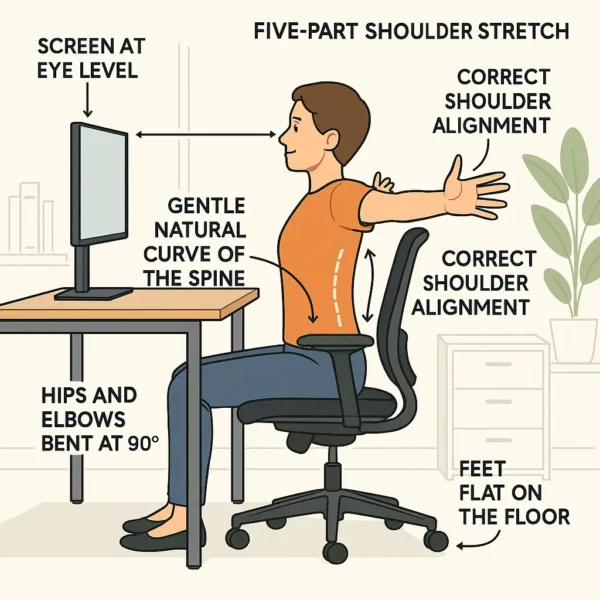
How’s it going? It’s Ekemba from SolCore Fitness again—answering your questions about the best posture for sitting at a desk or in your car.
First, a critical truth: Prolonged sitting is hard on the body. Anything stagnant stresses circulation, muscles, and joints. Standing desks have helped, but trade-offs exist—standing too long shifts the problem to the feet and circulation. Your body wants to move, so break up sitting time by walking, doing jumping jacks, or stretching every hour.
Desk Posture Science: Three Essentials
- Monitor Height: Line your eyes with the top third of the screen—too high or low strains the neck, throwing off posture and spinal alignment.
- Elbows & Hips: Aim for approximately 90 degrees. This reduces compression in the hips and elbows. Feet should rest flat on the floor, with thighs parallel—a position supported by ergonomic evidence to minimize back and leg strain.
- Movement & Breaks: Break sitting every 30–60 minutes. Gentle walks, standing, or desk stretches—like a seated arch or standing back arch—combat the body’s natural tendency to creep into unhealthy positions.
Exercise Tip: Open Up Your Shoulders
Don’t just sit—move, even while seated. Try the “five-part shoulder” exercise to open your shoulder girdle:
- Sit forward in your chair, grow tall, reach arms out, push away, lift arms to the ceiling, push forward, do a row, open and close the doors, reach toward your opposite shoulder blade, and repeat.
- Do 5–10 rounds periodically throughout the day.
- Notice which parts feel hard—these areas often need more stretching and myofascial work.
Why Myofascial Stretching and ELDOA Work
Poor posture rounds the spine and compresses joints. Myofascial stretching and ELDOA target muscle chains and joints, opening the body for better alignment and reducing pain. Targeted stretches support correct sitting position and long-term resilience.
Explore systematic approaches for office posture, stretching, and pain relief:
ELDOA: The Ultimate Spine And Joint Exercises
Find out more @

Leave a Reply